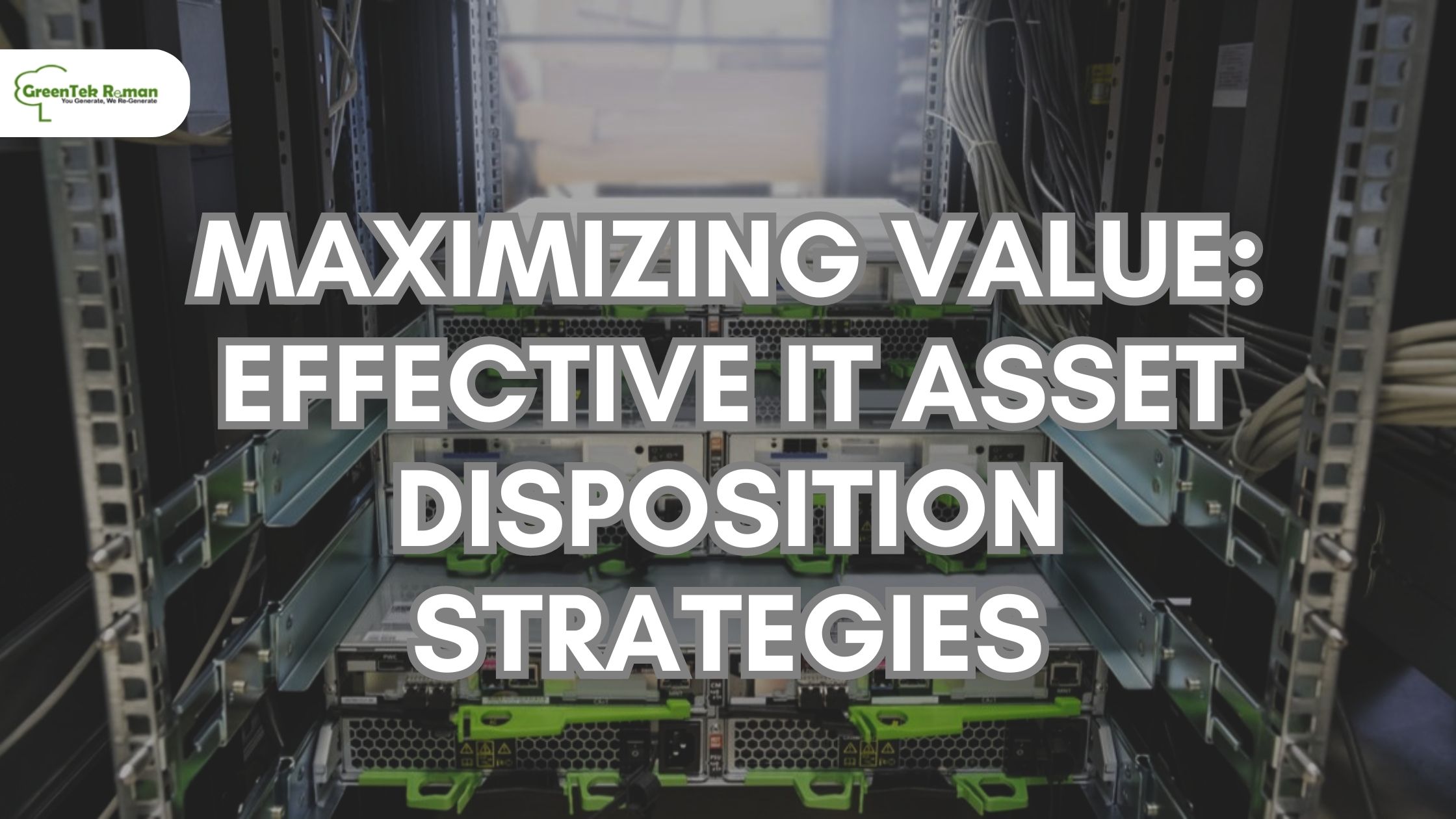Maximizing Value: Effective IT Asset Disposition Strategies
The assets, from computers and servers to smartphones and networking equipment, are crucial in supporting day-to-day operations and facilitating growth. However, as organizations continually upgrade their technology to keep up with the pace of change, a new challenge arises – what to do with the old and retired IT assets? Properly managing the disposition of IT assets is essential for various reasons. Inadequate electronic asset disposal can expose sensitive data, leading to potential data breaches and damaging the company’s reputation.
What is Strategic Asset Management?
Strategic Asset Management is a comprehensive strategy to manage an organization’s IT assets in order to achieve its goals while reducing risks. This involves the strategic planning, deployment, support, optimization, and retirement of IT assets, including hardware, software, and network equipment, to maximize their value and contribution to the organization’s success.
Effective electronic asset disposal is not just a quick fix; it involves the development of a long-term plan that considers the value, performance, and risks associated with IT assets. By implementing a solid IT Asset Management (ITAM) practice through SAM, organizations can reduce costs, enhance asset reliability, and ensure compliance with regulatory and vendor standards.
Key Steps to Design an Effective ITAM Strategy
Getting the strategy right is crucial when establishing a successful IT Asset Management practice. Consider using a checklist that breaks down the essential stages to help you kickstart the process and keep it organized. Here are the critical steps to designing an effective ITAM strategy for your business and stakeholders:
- Define Clear Goals: Begin by establishing well-defined objectives for your ITAM strategy. Discuss with senior management how to align these goals with the organization’s overall mission, such as optimizing costs, responding to audits efficiently, or enhancing equipment tracking.
- Conduct a Comprehensive Inventory: Take stock of all IT assets, including hardware, software, and licenses. Agree on a common data set to ensure consistent information collection across databases and spreadsheets.
- Implement a Policy: Establish a policy that underpins your ITAM practice, leaving no room for confusion. This policy should cover essential aspects like the purpose of ITAM, scope, regulatory compliance, request management, maintenance guidelines, asset retirement, and integration with other processes.
- Assess Asset Performance and Utilization: Evaluate the performance and usage of IT assets, identifying underutilized resources, and optimizing asset utilization for increased efficiency and cost reduction.
- Centralized Asset Management: Implement a centralized Asset Management database to track and manage all IT assets in one location, ensuring accurate reporting and improved visibility.
- Provide Training: Train employees, including end-users, in best practices for ITAM, emphasizing proper inventory tracking, software license management, and asset disposal.
Six Best Practices to Develop an Effective Asset Disposition Strategy
Developing an effective IT Asset Management plan requires following these six best practices:
- Prioritize Critical Assets: Identify assets that would significantly impact your business in the event of failure or downtime and prioritize them in your plan. Ensure mission-critical equipment has backup options and software is appropriately licensed for major vendors like Microsoft, Oracle, and Adobe.
- Learn from Past Mistakes: Review previous HAM and SAM activities, audits, and asset databases to understand pain points and create a roadmap for improvement.
- Focus on Data Accuracy: Establish checkpoints in your processes to maintain up-to-date and accurate information in your database, as the quality of your data is vital for successful asset management.
- Maintain Control: Control software installations to ensure only licensed and patched applications are installed on corporate devices. Collaborate with procurement teams to procure authorized and certified equipment.
- Plan for Maintenance: Budget and plan for predictive and proactive maintenance to ensure devices are regularly serviced, reducing the chances of unexpected breakdowns.
- Consider the Life Cycle: Remember to manage, maintain, and retire assets in a controlled manner throughout their lifecycle—factor in asset retirement plans during procurement and contract negotiations.
Role of an IT Equipment Disposal Company
ITAD companies play a crucial role in assisting organizations with the responsible and efficient management of their IT assets at the end of their lifecycle. Here’s how ITAD companies can help:
Secure Data Destruction: IT asset disposition companies specialize in data sanitization and secure data destruction, ensuring that sensitive information stored on retired IT equipment is permanently and irreversibly erased. This protects businesses from potential data breaches and ensures compliance with data protection regulations.
Asset Remarketing and Resale: These companies assess the value of used IT assets and facilitate their remarketing and resale. By refurbishing and selling viable equipment, organizations can recover some of the investment, reducing the overall cost of upgrading to newer technology.
Environmentally Responsible Recycling: ITAD companies provide eco-friendly solutions for recycling end-of-life IT equipment. They follow strict environmental standards and regulations, minimizing the impact of electronic waste (e-waste) on the environment.
Regulatory Compliance: ITAD companies stay up-to-date with relevant regulations and compliance requirements, ensuring that the organization’s IT asset disposition practices align with legal obligations.
Asset Tracking and Reporting: ITAD companies offer comprehensive inventory services, helping organizations keep track of their IT assets, including hardware, software, and licenses. They provide detailed reports and documentation, streamlining auditing and compliance procedures.
Sustainable Disposal Solutions: The best ITAD company, like GreenTek Reman, can assist in choosing the most suitable disposal methods for IT assets that cannot be remarketed or recycled. We ensure that retired equipment is ethically and responsibly processed, avoiding illegal dumping and hazardous practices.
Streamlining ITAD Processes: By outsourcing ITAD to specialized companies, organizations can focus on their core business activities while leaving the complexities of asset disposition to experts. This streamlines ITAD processes and ensures the efficient handling of retired assets.
Certifications and Security Standards: IT equipment disposal companies like ours adhere to industry certifications, such as R2 (Responsible Recycling) or e-Stewards, which guarantee responsible and ethical handling of e-waste. We also maintain high-security standards during the entire disposition process.
Get in touch with us right away!


